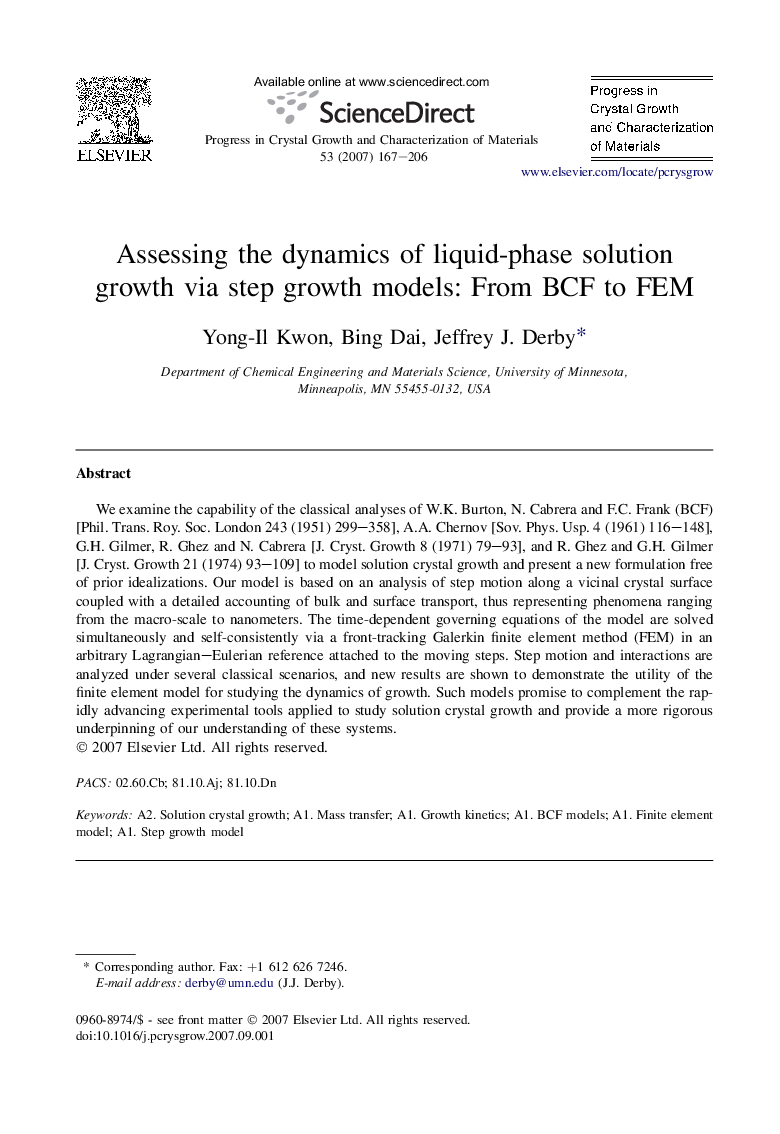| Article ID | Journal | Published Year | Pages | File Type |
|---|---|---|---|---|
| 1590658 | Progress in Crystal Growth and Characterization of Materials | 2007 | 40 Pages |
We examine the capability of the classical analyses of W.K. Burton, N. Cabrera and F.C. Frank (BCF) [Phil. Trans. Roy. Soc. London 243 (1951) 299–358], A.A. Chernov [Sov. Phys. Usp. 4 (1961) 116–148], G.H. Gilmer, R. Ghez and N. Cabrera [J. Cryst. Growth 8 (1971) 79–93], and R. Ghez and G.H. Gilmer [J. Cryst. Growth 21 (1974) 93–109] to model solution crystal growth and present a new formulation free of prior idealizations. Our model is based on an analysis of step motion along a vicinal crystal surface coupled with a detailed accounting of bulk and surface transport, thus representing phenomena ranging from the macro-scale to nanometers. The time-dependent governing equations of the model are solved simultaneously and self-consistently via a front-tracking Galerkin finite element method (FEM) in an arbitrary Lagrangian–Eulerian reference attached to the moving steps. Step motion and interactions are analyzed under several classical scenarios, and new results are shown to demonstrate the utility of the finite element model for studying the dynamics of growth. Such models promise to complement the rapidly advancing experimental tools applied to study solution crystal growth and provide a more rigorous underpinning of our understanding of these systems.
